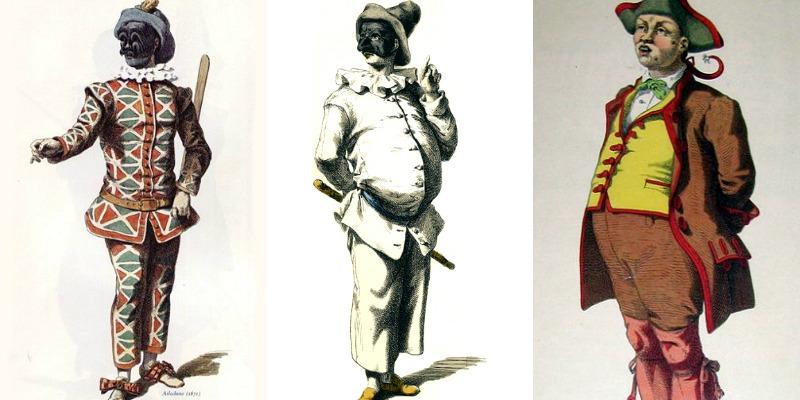Three of the traditional Italian Carnival masks are synonymous with the emergence of the Commedia dell'Arte in the second half of the 16th century with the most popular being Arlecchino (The Harlequin), followed by Gianduja and Pulcinella.
Arlecchino’s name comes from the German for king of hell, as he was originally a 12th century representation of a demon. To allay the audience’s fears, he was portrayed in comedic roles and this led to his evolution into the modern harlequin we know today.
Arlecchino became more distinct in the late 1500s, with the introduction of his costume that originated in Bergamo. Made up of coloured lozenges to depict patches of fabric that have been stolen and stitched together, he began to take on the role of a jester. With his continuous leaping about, his inability to control his impish nature and constant meddling in other peoples’ business, he quickly cemented his importance within the Commedia dell’Arte movement.
The mask of Arlecchino is black and, to pay homage to his origins, it displays a remnant of his once devilish horns; to portray his agility, the mouth is that of a cat. All of these characteristics point to the various stages of his evolution from devil to jester.
Perhaps one of the lesser known characters of the Commedia dell’Arte but no less important is Gianduja. Originating from the village of Callianetto, north of Asti, it could be said that his Piemontese origins are perhaps the reason he has a penchant for fine wine, particularly the sweet Brachetto that originates from Acqui Terme.
Lacking in any malice and being an entirely positive character, he is said to be the personification of the people of Turin and is always portrayed in the theatre as hardworking and staunchly faithful to his lover Giacometta.
Dressed in his tri-corn hat and red-edged jacket, Gianduja is a patriotic character who, in the early 19th century, unintentionally played an important role in Italy’s unification; during his theatre performances, he’d often take a critical stance against politicians by satirising their speeches. Nowadays, his satirical side has been forgotten but his legacy lives on, immortalised in the famous triangular-shaped chocolates of Turin that are named after him.
After Arlecchino, possibly the most famous of Italian masks is that of Pulcinella, the bumbling spaghetti eating fool. His origins are vague but it is thought he first appeared in Imperial Roman burlesque theatre around the 4th century BC. His current guise was established in the early years of the 16th century by the actor Silvio Fiorillo, who was allegedly inspired by an image painted by the Baroque artist Annibale Carracci of the long-nosed and sunburnt peasant Puccio d'Aniello; he condensed his name down into the form we now know as Pulcinella. Fiorillo then went on to invent Pulcinella’s mask in Naples, cementing the characters association with the city. The long nosed mask with bulging cheeks was teamed up with a ‘sugar loaf’ hat to be worn at a jaunty angle and a loose white shirt to cover the prominent belly that is testament to the clown’s gluttony.












